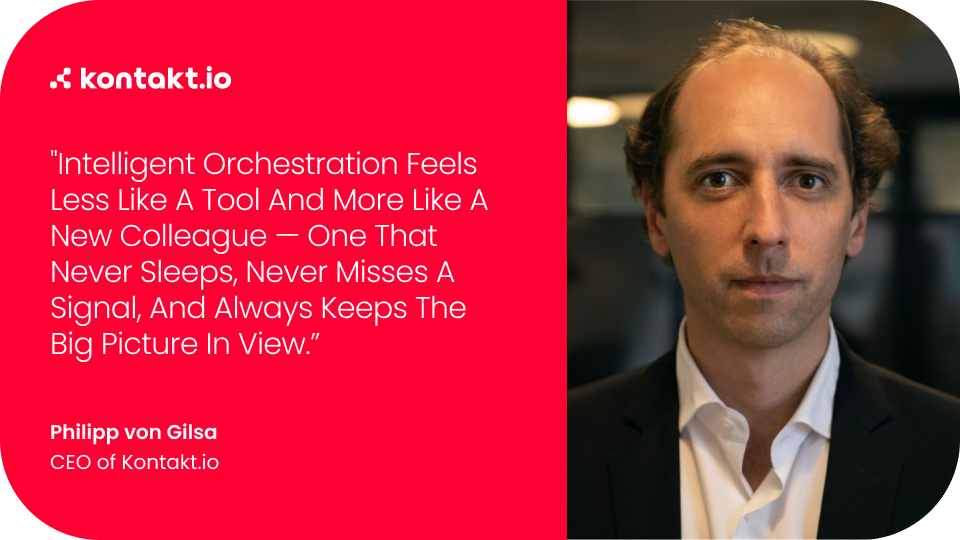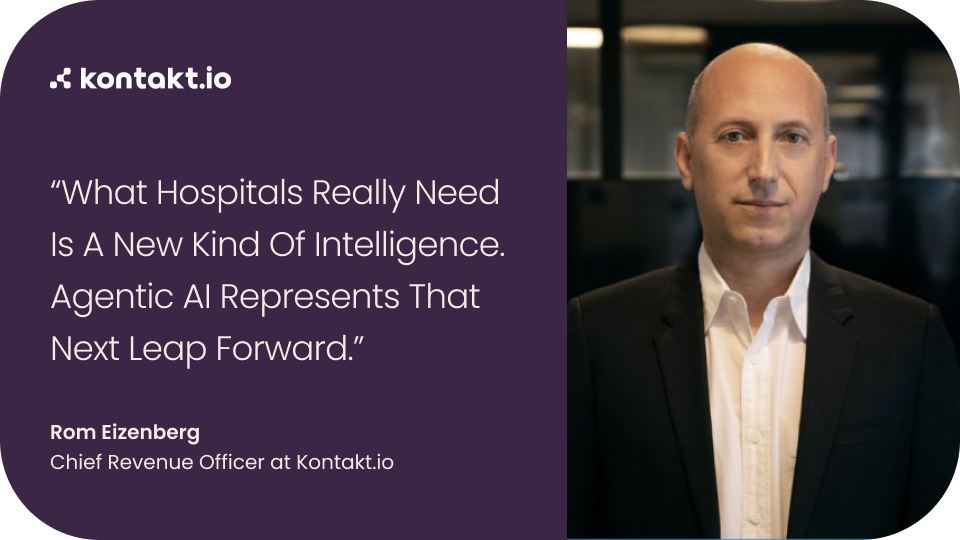It’s 10:17 a.m. on a typical Tuesday at a 200-bed hospital and Nurse Julia is juggling her duties: a patient discharge, a run for pain medication, and a worried family. Meanwhile, the patient in room 712 was discharged but Environmental Services hasn’t been notified so the room sits idle and empty while a patient in the emergency department is stuck waiting for a room to open up. Also, to Nurse Julia’s dismay, the only bladder scanner has mysteriously disappeared — again.
This scenario is all too common in today’s hospitals. And it’s all too clear how these issues create bottlenecks in patient care. But it doesn’t have to be this way.
Imagine if there were an invisible teammate quietly solving these problems in real time: showing Nurse Julia where she can find that bladder scanner, notifying Environmental Services (EVS) that room 712 is ready to be cleaned, and alerting the emergency department that room 712 will be ready shortly.
That’s the promise of an AI agent.
AI has many applications in healthcare, and Agentic AI brings valuable benefits for hospitals. An AI agent is best thought of as that ultra-reliable coworker who’s always one step ahead of their to-do lists. Instead of waiting for someone to notice an issue, the AI agent flags it and nudges the right team, or, increasingly, resolves it on its own. To see how this works in practice, let’s consider a few examples.
First, there’s faster bed turnover: when a patient discharge is posted in the electronic health record (EHR), the AI agent immediately flags the empty bed and pings EVS on their mobile app. When EVS finishes and taps “Done” on their mobile app, this updates the bed board. This seemingly simple workflow delivers significant results. That bed now sits idle for only minutes instead of hours, increasing capacity and reducing patient wait times.
Second, let’s look at real-time staff assistance: if the AI agent see that a nurse (via her integrated BLE badge) stays in a patient room longer than usual — and the patient (via their EHR) has a high fall risk — the agent recommends a check-in, alerting and directing nearby staff members to that patient room.
Third, there’s asset management and smart equipment reallocation: if ten IV pumps are idle in the Oncology Department while the Emergency Department is in short supply, the AI agent alerts supply chain and transport teams to rebalance resources and avoid costly rentals or treatment delays. This is dynamic, acting in real-time to evolving conditions.
The impact is clear: less chaos and putting out fires and more operational flow. Before AI agents, staff spent time hunting for information or equipment, making manual calls, and reacting to workflow bottlenecks. With AI agents, the information finds the staff, mobile nudges are traceable and automated, and help arrives proactively. These shifts all lead to better asset utilization and higher patient throughput. But most importantly, it means work feels smoother and staff can focus on caring for patients — not managing logistics.
This isn’t just another software tool.
AI agents live within your existing systems, quietly in the background. No need for staff to stare at yet another screen or make sense of a new dashboard. Yes, the AI agents operate with human oversight, of course. Rules are set, escalation paths are outlined, and override is always available. And the results are measured, with real-world metrics, like fewer delays, smoother throughput, and happier staff members.
Will AI agents replace staff? No, not at all. They’re designed to amplify staff efforts by handling routine tasks and surfacing issues early. Do hospitals need new hardware? Probably not. Most hospitals already have the necessary data streams and AI agents just connect the dots. Is this all secure? Absolutely, HIPAA compliance comes first, and top vendors ensure encryption in transit and at rest while minimizing the data they process.
Now, integrating AI agents into your hospital workflow doesn’t require a massive overhaul. What’s important is an effective beginning. And the most effective path begins with a single, high-impact use case, like bed turnover or equipment tracking, with a clear baseline metric.
From there, connect the data feeds you already have: EHR, RTLS, BLE badges, and run the agent in a silent mode to validate its insights before going live. Within 90 days, most hospitals can move from pilot to production in a smooth, easy way that builds confidence, earns staff trust, and shows measurable improvements in both patient flow and equipment utilization.
With AI agents, there’s no rip and replace. It’s all about stitching together what you already use, the data you already have, and unlocking the performance you’ve always known was possible. This new invisible teammate is ready. The only question is: where will you deploy your first AI agent?



